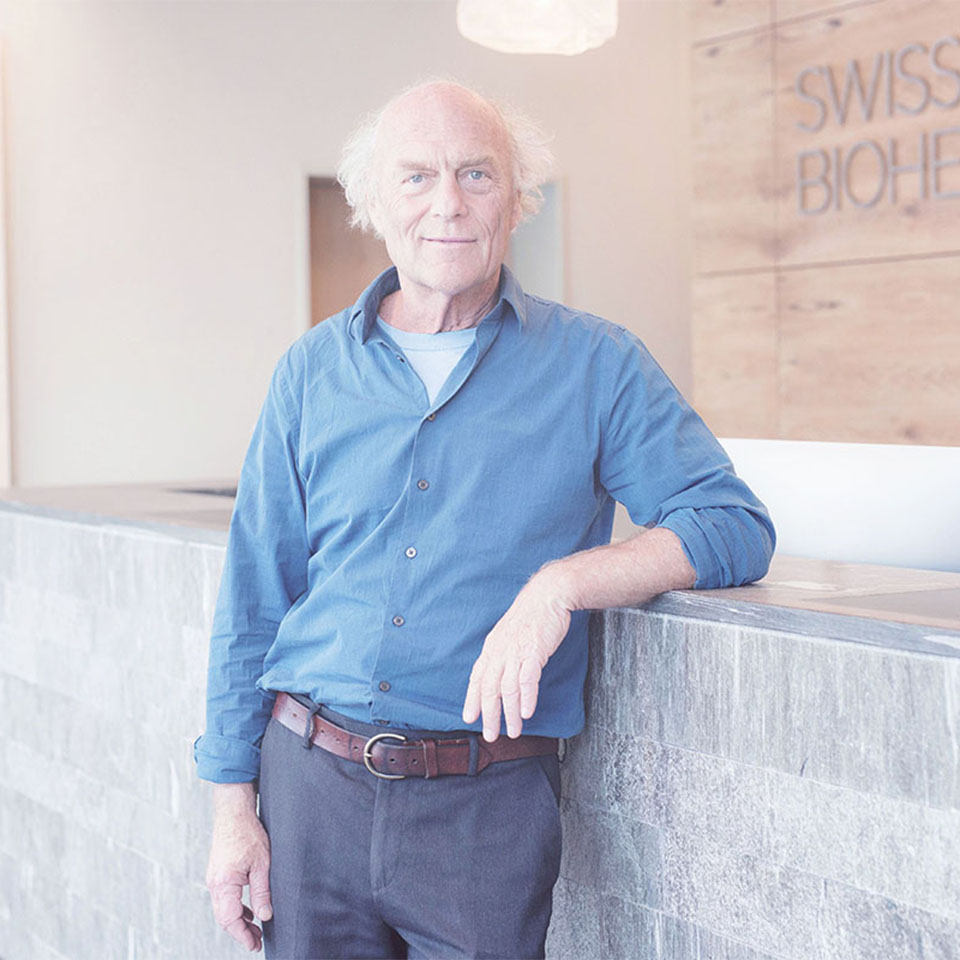COVID19

Dear patients and friends,
Herewith we would like to put your mind at ease and to inform you that we do take great care to the best of our abilities to protect you as patient and ourselves with the precautions to the Covid virus.
Please note that we are open during the Lock-down period to assist our patients. As you know we are practising Biological Dentistry and am fully aware of the fact that the treatment that we do - will improve your health as we are treating "The Root Cause" of your health problems and not just your symptoms
We can provide you with a document allowing you to travel. There are patients travelling from all of the different Provinces.
With this special newsletter we would like to share information about possible prophylaxis and therapy regimes according to Dr. Klinghardt in the context of the current reports on the corona virus. In addition, we provide you a more differentiated view on the current event.
In the western civilised countries we suffer from a massive increase in diabetes, heart diseases, cancer, autoimmune diseases, neuro-degenerative diseases, Lyme disease and many other diseases. We know for sure that these chronic diseases are particularly related to our lifestyle.
In contrast, epidemic-like, acute infectious diseases have only been reported to a significant degree in poor countries in recent decades where there is a lack of food, nutrients, hygiene and poor living conditions. In our countries, however, the incidence of acute epidemics is rarely observed anymore. Therefore, it is not surprising that none of the relevant predictions during the last 40 years have really happened; regardless if we are talking about HIV, swine flu, bird flu, mad cow disease, SARS, Ebola, Zika virus or dangerous Chinese flu viruses. Most of these acute infectious diseases arise from China due to close contact of people and animals. Especially the so-called zoonoses, such as the coronavirus (transmitted from animals to humans) can spread easily in these countries.
Unfortunately, people can die from the above-mentioned infectious diseases. However, in relation to the 40,000 people who die every year from dangerous hospital germs in Germany alone, the mortality rate of these diseases appears to be much less dramatic. At the end of January, about 4,500 people were infected with coronavirus, and about 100 people (mostly diagnosed with pre-existing illnesses, immunodeficient or being treated with immunosuppressive drugs) died from the infection. On the other hand, the flu wave in the winter months 2017/2018 reported 42,5 million infected persons and around 1 million people died from it! First results demonstrate that the coronavirus, as an RNA virus, is relatively mild in its symptoms and has a low mutation rate.
Probably it is no coincidence that these infections frequently occur at the same time of the year. Especially people of the industrialized countries of the northern hemisphere do not spend enough time in fresh air, thereby lowering their vitamin D3 level and furthermore compromise their immune system by poor nutrition during Advent, Christmas and New Year.
We do not intend to underestimate the discussion about the coronavirus, but aim to put a differentiated view on the topic and to eliminate the fear factor. Due to its negative psychological effects, fear weakens the immune system!
In contrast, it is beneficial to expect the best and be prepared for the worst!

This implies to support our immune system optimaly at this time of the year, independent of the coronavirus:
- As much exercise as possible in fresh air every day
- As much of a healthy restful sleep as possible (at least 7, better 8 hours per night, see also our newsletter about sleep)
- Balanced hypoallergenic diet without dairy products, grains (especially wheat) and sugar
- Reduced food intake and longer intervals without any snacks to relieve the gastrointestinal tract. Depending on the individual tolerance, longer breaks up to intermittent fasting (“16/8 fasting”) are recommended.
- Avoidance of electrosmog (WLAN and mobile phone networks), as it weakens our immune system demonstrably.
- Maintenance of many pleasant social contacts as possible and a stress reduced lifestyle. Emotional stress tremendously burdens our immune system, while good social contacts with encouraging conversations, games and laughter strengthen it a lot. This should be supported by supplementation of vitamin D3 and its important co-factors in order to achieve a blood level of at least 70 ng/ml, better 100 ng/ml.
- Last, but not least: the elimination of oral interference fields as an important factor for a strong immune system (all the subscribers of our newsletter have already done this for sure…)

During this period of year which can be a burden to our immune system, you can strengthen yourself with weekly infusions with vitamin C, autohaemotherapy (with ozone, UV etc.) or colon hydrotherapy. In contact with infected persons, the usual precautions such as mouth protection, gloves, protective clothing and surface disinfection have to be applied.
In general, we consider the “common flu” to be much more dangerous at the moment. However, if you wish to protect yourself against viral diseases, we will provide you the following recommendations of Dr. Klinghardt which are supported by studies. The two substances HOCL-Spray and Ki-Liquorice are effective for prophylaxis as well as for therapy. They are in stock depending on availability, so that you can order them from us.
If our immune system is strong enough, we can cope very well with the challenges of our environment we are exposed to every day anyway!
Therapy recommendation according to Dr. Dietrich Klinghardt

- The virus is known to transmit via the air, the mucous membranes including the eyes and other still unknown pathways. We can protect the facial area by applying the HOCL spray several times a day on face, mouth, hands and any other exposed surface.
- The medical literature shows that our attempt to use liquorice is correct. We recommend 2 pipettes of the tincture 2-3 times a day for solid prophylaxis; take more if you have a suspicion of being infected.
- Otherwise keep your Vitamin C, Vitamin A and Vitamin D3 levels as high as possible – this is a good way to overcome this period!
Results of research reported by Dr. Dietrich Klinghardt:
Liquorice against the Corona-virus
Jeffrey I. Cohen: “Licking latency with liquorice.” The Journal of Clinical Investigation 115.3 (2005): 591-593.
Abstract: Numerous viruses cause latent infections in humans, and reactivation often results in pain and suffering. While vaccines for several of these viruses are available or currently being studied in clinical trials, and antiviral therapies have been successful in preventing or treating active infection, therapy to eradicate latent infection has lagged behind. A new study reported in this issue of the JCI shows that treatment of cells latently infected with Kaposi sarcoma–associated herpesvirus (KSHV) with glycyrrhizic acid, a component of liquorice, reduces synthesis of a viral latency protein and induces apoptosis of infected cells. This finding suggests a novel way to interrupt latency.
Liquorice, derived from the root of Glycyrrhiza glabra, has been used for more than 4 millennia as a flavoring agent in foods, beverages, and tobacco (1). Liquorice is also used as an alternative medicine for the treatment of gastric and duodenal ulcers, sore throat, bronchitis, cough, arthritis, adrenal insufficiency, and allergic diseases. The liquorice root contains numerous compounds, including glycyrrhizic acid (GA). It is estimated that in the United States, 3.3 mg of GA is consumed per person daily. GA inhibits the replication of several viruses in vitro including herpesviruses, HIV, and the SARS Corona-virus. When taken orally, GA is hydrolyzed to glycyrrhetic acid by bacteria in the gastrointestinal tract before GA can be absorbed. Therefore, in Asia, where GA is used for the treatment of chronic hepatitis B or C infection, the drug is infused intravenously to achieve the appropriate serum levels.
Licorice against EBV:
Lin, Jung-Chung: “Mechanism of action of glycyrrhizic acid in inhibition of Epstein-Barr virus replication in vitro..” Antiviral Res. 59.1 (2003): 41-47.
Abstract: We report here that glycyrrhizic acid (GL), a component of licorice root (Glycyrrhiza radix), is active against EBV replication in superinfected Raji cells in a dose-dependent fashion. The IC(50) values for viral inhibition and cell growth were 0.04 and 4.8mM, respectively. The selectivity index (ratio of IC(50) for cell growth to IC(50) for viral DNA synthesis) was 120. Time of addition experiments suggested that GL interferes with an early step of EBV replication cycle (possibly penetration). GL had no effect on viral adsorption, nor did it inactivate EBV particles. Thus, GL represents a new class of anti-EBV compounds with a mode of action different from that of the nucleoside analogs that inhibit viral DNA polymerase.
Okamoto, Hitoshi, Daisuke Yoshida und Shigenobu Mizusaki: “Inhibition of 12-O-tetradecanoylphorbol-13-acetate-induced induction in Epstein-Barr virus early antigen in Raji cells.” Cancer letters 19.1 (1983): 47-53.
Abstract: Retinol, 5 flavonoids, 3 steroids and 7 sweetening agents were studied for their effects on 12-O-tetradecanoylphorbol-13-acetate (TPA)-induced early antigen (EA) of Epstein-Barr virus (EBV) in Raji cells. Concomitant treatment of Raji cells with TPA and retinol showed inhibition of EA induction. Among flavonoids, quercetin resulted in effective inhibition of EA induction by TPA and α-naphthoflavone showed the weakly inhibitory effect. None of the other flavonoids such as rutin, catechin and β-naphthoflavone affected the induction of EBV-EA by TPA. β-Estradiol obviously inhibited EBV-EA induction by TPA, but hydrocortisone did not show any inhibitory effect on it. Glycyrrhetinic acid, steviol, phyllodulcin and perrillartine also showed the remarkable inhibition of EBV-EA induction. On the other hand, glycyrrhizin and stevioside, glycosides of glycyrrhetinic acid and steviol, did not inhibit the induction of EBV-EA by TPA. Some of the inhibitors reported here may be effective on the inhibition of the in vivo tumor promotion by TPA.